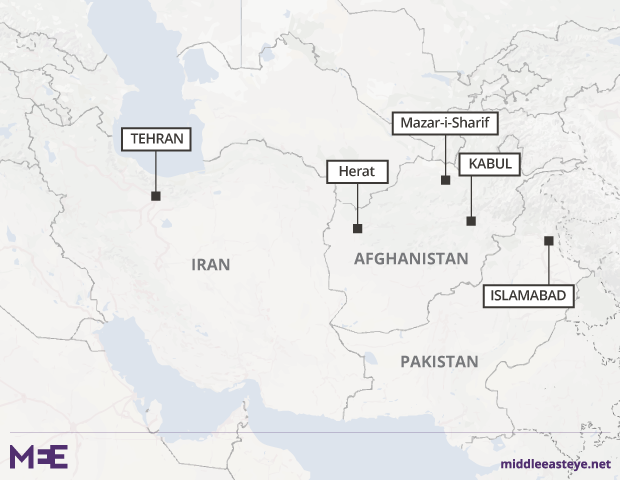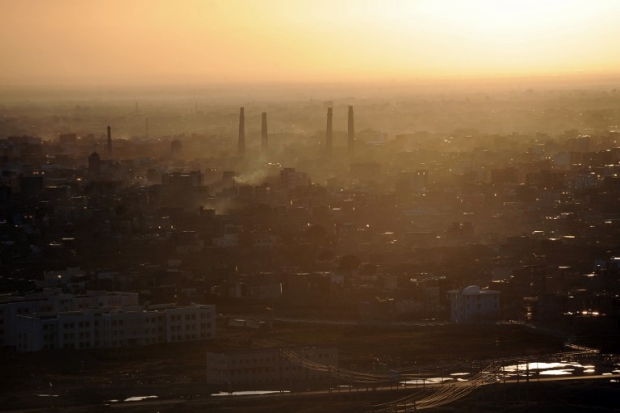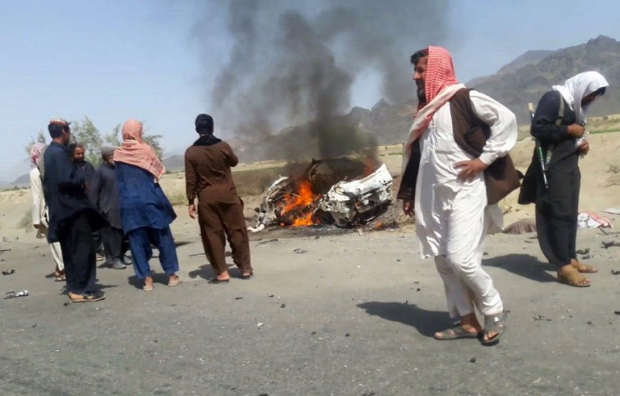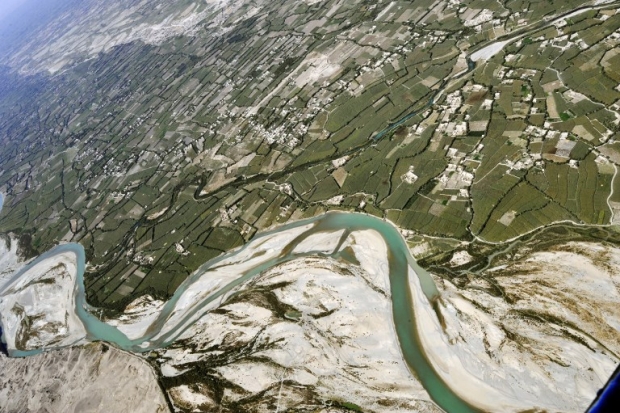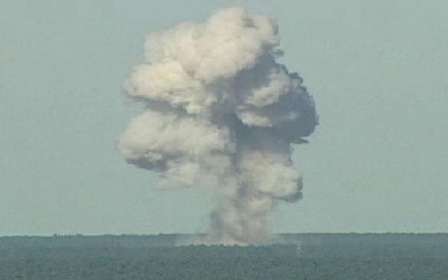Iran could make or break the US war in Afghanistan

The Trump administration is currently reviewing US policy in Afghanistan where America has been at war for the last 16 years and still retains over 8,000 troops.
Some in the White House reportedly favour a small military surge combined with aggressive action against Afghanistan’s neighbour, Pakistan, which allegedly harbours Taliban militants and supports the anti-government insurgency.
The US requires Iran’s assistance to improve Afghanistan’s security, reduce drug flows, and develop the landlocked country’s economy
But less often mentioned is the role of Iran, which also borders Afghanistan and exerts considerable influence there, too. Iran has strong cultural, religious and linguistic ties to the country.
Persian imperial dynasties once ruled large parts of it, including the major western city of Herat. About 15 percent of Afghans adhere to Shia Islam, the majority faith of Iran, while Dari, one of Afghanistan’s main languages, is a dialect of Persian.
Iran’s engagement in Afghanistan has deepened in recent decades. During the Afghan civil war of the early 1990s, the Islamic Republic backed various mujahideen groups. When the Taliban took power in 1996, Tehran supported its main opponents, the Northern Alliance (as it came to be known). The Northern Alliance also received help from India and Russia, which shared Iran’s hostility to the new government in Kabul.
Iran and the Taliban are natural adversaries, the former an overwhelmingly Shia state, the latter an intolerant Sunni group. In the 1990s, the Taliban massacred and persecuted members of Afghanistan’s Shia minority, the Hazara.
Switching sides
In this context, it is hardly surprising that Iran happily supported the US war against the Taliban in 2001. Tehran provided military and intelligence assistance, and expelled al-Qaeda and other Sunni militants from its territory at the US’s request. At the Bonn Conference in late 2001, convened to broker Afghanistan’s new government, Iran successfully persuaded the Northern Alliance to support US-backed Hamid Karzai as president.
Tehran started throwing its weight behind the Taliban to counter what it perceived as a hostile US military presence
However, US-Iranian cooperation died a death in 2002 when President George W Bush included Iran in the “axis of evil”. The subsequent invasion of Iraq in 2003 and long-term occupation of Afghanistan further antagonised Iran, which was now sandwiched between American forces on either side. Tehran, therefore, started throwing its weight behind the Taliban to counter what it perceived as a hostile US military presence.
That support has apparently increased over time. The Taliban receives funding and weapons from Tehran. It also has an office in Iran, and may have training camps there too. When the former Taliban emir Mullah Mansour was killed by a US drone strike in Pakistan in 2016, his passport showed multiple Iranian stamps.
Iran and Russia are likely betting on a stronger Taliban role in Afghan politics, too. The corrupt and divided Kabul government has been losing territory and controls just over half of the country. Some kind of power-sharing agreement with the Taliban looks increasingly inevitable. Iran might be trying to maximise its leverage in Afghanistan’s political future.
Deeper than the Taliban
So, Tehran’s siding with the Taliban is largely pragmatic and not based on some new-found ideological affinity. Indeed, Iran has embraced Sunni groups before, such as Hamas, and once had strained ties with al-Qaeda. Its foreign policy is more flexible and opportunistic than notions of a rigid Shia-Sunni regional divide would suggest.
Iran and Russia are likely betting on a stronger Taliban role in Afghan politics
But Iran’s influence in Afghanistan goes deeper than its support for the Taliban. It has also created a Shia militia, the Fatemiyoun, recruited from its large Afghan refugee population. That militia, which reportedly comprises as many as 14,000 men, has been deployed to fight on the side of President Bashar al-Assad in Syria. But, when the Syrian conflict ends, it is feared that Iran could redirect the Fatemiyoun to operate in Afghanistan.
Iran’s refugee policies impose great pressure on the Kabul government. There are up to one million Afghan refugees in Iran, according to the UN, and deportations have been increasing, with well over 100,000 sent back so far this year, and 600,000 planned by the end of 2017.
War-torn Afghanistan, with its weak economy, is struggling to absorb all these people, in addition to the huge numbers who have returned from Pakistan.
Then there is the issue of drugs. Afghanistan accounts for about 90 percent of the world’s heroin, much of it smuggled through Iran. Iran has a strong interest in restricting drug flows, given its domestic narcotics problem.
There are reportedly 2.7 million drug addicts in Iran, most of them heroin users. The Taliban receives much of its funding from the drugs trade, and the US and Afghan government will struggle to curtail it without Iran’s help.
Water is another important factor. Kabul and Tehran have a water-sharing agreement granting access to the Helmand River, which flows into eastern Iran. But tensions have flared up between the two countries recently, because Afghanistan is building dams which – Iranian President Rouhani claims – restrict water supplies unfairly. Iran has sponsored repeated Taliban attacks against these dam projects, according to Afghan officials.
The Islamic Republic has also used soft power to consolidate its influence in Herat, building schools, clinics and transport infrastructure, and it funded one of the country’s largest madrassahs, in Kabul. Moreover, Tehran has ties to Afghanistan’s sizeable Hazara Shia minority and its political representatives, along with local religious leaders such as Grand Ayatollah Mohammad Asef Mohseni.
Moreover, Iran has strong economic interests in Afghanistan. In 2016, it surpassed Pakistan as Afghanistan’s largest trading partner, providing oil, electricity, food and medicine. Afghanistan, by contrast, exports very little, and the trade deficit gives Iran considerable leverage: in 2010-2011, for example, Tehran restricted fuel imports in an apparent attempt to pressure the US.
Counter-productive US rhetoric
Iran’s role may expand further. In 2016, it signed a treaty with India to facilitate trade with Afghanistan and Central Asia through the southern Iranian port of Chabahar.
This project would allow Afghanistan to bypass Pakistan, which periodically closes its border and has fraught relations with the government in Kabul. But it has been delayed by the prospect of renewed US sanctions against Iran, which have deterred companies from getting involved.
Indeed, the Trump administration has adopted an extremely harsh posture towards the Islamic Republic, with officials publicly advocating regime change. This is counter-productive, because the US requires Iran’s assistance to improve Afghanistan’s security, reduce drug flows, and develop the landlocked country’s economy.
Washington and Tehran have collaborated before to address common interests, and should do so again.
Iran could also help negotiate a peaceful end to the war. As Professor Barnett Rubin, director of the Afghanistan Regional Project at New York University, and other experts have written, there is no military solution to the conflict, and a broad diplomatic settlement involving the various regional players is now essential. Given Iran’s influence in Afghanistan and its ties to the Taliban, it must have a seat at the table.
But, unless Trump adopts a more conciliatory attitude, this is unlikely to happen, and the chaos in Afghanistan will only get worse.
- Rupert Stone is a Berlin-based independent journalist working on national security and foreign affairs. He tweets @RupertStone83.
The opinions expressed in this article are those of the author and do not necessarily reflect the editorial position of Middle East Eye.
Photo: The US Army's 3rd Brigade Combat Team, 1st Infantry Division, return to Fort Knox, Kentucky after a nine-month deployment in Afghanistan (AFP)
New MEE newsletter: Jerusalem Dispatch
Sign up to get the latest insights and analysis on Israel-Palestine, alongside Turkey Unpacked and other MEE newsletters
Middle East Eye delivers independent and unrivalled coverage and analysis of the Middle East, North Africa and beyond. To learn more about republishing this content and the associated fees, please fill out this form. More about MEE can be found here.



